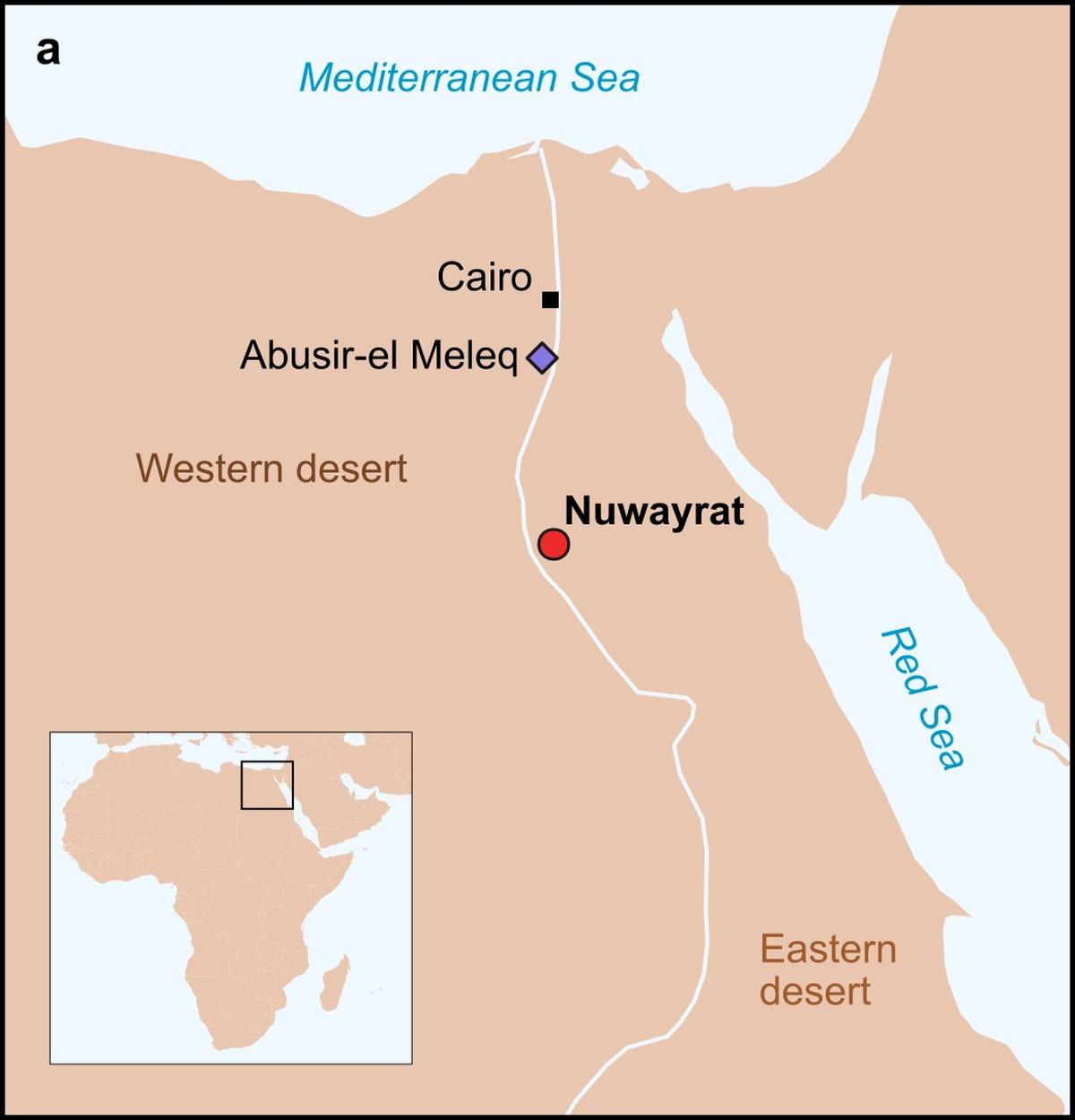Researchers have sequenced the first whole ancient Egyptian genome from an individual who lived 4,500 to 4,800 years ago — the oldest DNA sample from Egypt to date. The body belongs to an adult male who died more than 4,500 years ago during Egypt’s Old Kingdom.
The individual was “genetically male (XY sex chromosomes), consistent with the expression of standard skeletal features”. The ancient Egyptian individual is predicted to have had brown eyes, brown hair, and skin pigmentation ranging from dark to black skin with a lower probability of an intermediate skin colour.
As per the osteological examination, the man was 157.4-160.5 cm tall, and lived up to the age of 44-64 years. His age at the time of dying is based on the evidence of heavily worn teeth and age-related osteoarthritis in most joints and vertebrae. The results were published on July 2 in the journal Nature.
“Direct radiocarbon dating of the remains aligns with the archaeological context corresponding to the third to fourth dynasties, marking the beginning of the Old Kingdom,” Adeline Morez Jacobs from the School of Biological and Environmental Sciences, Liverpool John Moores University, Liverpool, the U.K., and the first author of the paper, said during a virtual press conference.
Rock-cut tombs at Nuwayrat enclosing the pottery vessel containing the pottery coffin burial.
| Photo Credit:
Morez, A.
The body was discovered in the early 20th century, buried in a large ceramic pot within a rock-cut tomb at a site named Nuwayrat, a village 265 km south of Cairo. The burial type and physical remains of the individual indicate that the man was relatively well-off socioeconomically but also lived a life of hard labour.
Insights into ancestry
Genetic results showed that a majority of his ancestry, about 78%, hailed from ancient North African populations, specifically from Neolithic groups from present-day Morocco. However, the most fascinating result is that about 22% of his DNA is a close match to early farmers from Mesopotamia (present-day Iraq, western Iran, southern Syria, southeast Turkiye), one of the eastern Fertile Crescent. “This implies that individuals from these regions were not just exchanging goods with Egypt but might even have migrated and interacted with local people long before the construction of the pyramids,” Niraj Rai from the Birbal Sahni Institute of Palaeosciences, Lucknow, who is not part of the study, said.
Nearly 20% of the genetic makeup of the individual suggests historical cultural exchanges and interactions between Egyptian and Eastern Fertile Crescent, according to Dr. Jacobs. “The relationships between Egyptian and Eastern Fertile Crescent cultures extended back over 10,000 years, influencing practices in animal farming and trade of precious goods, leading to the emergence of writing systems in both regions,” she said.
Though the Neolithic Mesopotamian connection is evident, the authors are quick to point out that this heritage may not have been direct. “Perhaps the genes were transferred over time through other ancient Levantine populations (modern-day Israel, Jordan, and Syria),” Dr. Rai explained. “Nevertheless, the DNA offers the first direct biological proof that Egypt’s early populace was not only influenced by local traditions but also by far-ranging interactions that bridged continents.”

The geographic location of the Nuwayrat cemetery appears as a red dot, and the previously sequenced Third Intermediate period individuals from Abusir-el Meleq are indicated with a purple diamond
| Photo Credit:
Morez, A.
Although the results are based on a single Egyptian genome, they “mirror another study that found evidence of gene flow from the Mesopotamian and Zagros regions into surrounding areas, including Anatolia, during the Neolithic”, the authors said. The genome data, together with archaeological evidence, supports a possible wider cultural and demographic expansion originating in the Mesopotamian region, which reached both Egypt and Anatolia during this period.
DNA well-preserved
DNA was successfully extracted from the individual’s teeth. Previously, only three ancient Egyptian genetic datasets were available from later periods —787 cal. BCE to 23 cal. CE. Despite the relatively recent age, these have not yielded complete genome sequences but are limited to about 90,000-4,00,000 target-enriched genotypes.
The genome of the ancient Egyptian is said to be the most complete and oldest from Ancient Egypt. According to the authors, one possible explanation for the successful retrieval of the whole-genome, despite the man dying more than 4,500 years ago, is the pot burial. His burial took place before artificial mummification was standard practice. “We hypothesised that a combination of pot burial together with a rock-cut tomb in which the pot burial was placed provided a stable environment. While the overall climate is hot, a key factor for long-term DNA preservation is the stability of the temperature,” Linus Girdland-Flink from the Liverpool John Moores University, one of the corresponding authors, said during the virtual press conference. “Also, we took DNA samples from the teeth root tips. The root tips get locked into the lower jaw, which might have helped preserve the DNA. That kind of dental tissue is very good for DNA preservation,” Dr. Girdland-Flink said.
“It is extremely unusual to find DNA evidence, particularly in a warm country such as Egypt. To date, no whole genome from this region and time period has ever been retrieved,” Dr. Rai said. “Indeed, most ancient DNA analyses are derived from colder locations such as Europe and Siberia, where preservation is in higher percentage. Worldwide, the oldest modern human genome ever sequenced belonged to an individual from Siberia around 45,000 years ago. In India, ancient DNA research remains on the horizon, but the oldest samples that have been sequenced until now, such as at the Harappan site Rakhigarhi, are roughly 4,000 years old, and of considerably poorer preservation.”
Published – July 03, 2025 02:34 am IST

